CHRONOLOGY
|
| 1931 |
The International Council for Science
(ICSU) is founded to promote international scientific activity in the
different branches of science and its application for the benefit of
humanity.
|
| 3 October 1942 |
German V-2 rocket is the first ballistic missile, and the first man-made object launched into space.
|
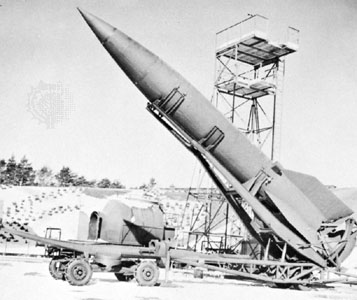
|
| 1952 |
ICSU proposes the International
Geophysical Year (IGY): a series of global geophysical activities to
span the period July 1957 - December 1958.
|
| 27 May 1954 |
Russian Sergei Korolev proposes
development of an artificial Earth satellite to Soviet Minister of
Defense Industries Dimitrii Ustinov.
|
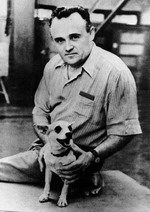
|
| 29 July 1955 |
U.S. President Eisenhower's press secretary announces that the U.S. will launch an artificial Earth satellite during the IGY.
|
| 21 August 1957 |
Soviets launch the R-7 Semyorka, the first intercontinental ballistic missile (ICBM).
|

|
| 4 October 1957 |
Soviet satellite Sputnik 1 is
launched into space via an R-7 missile. About the size of a basketball,
this is the first artificial Earth satellite. It weighs 184 pounds and
takes about 98 minutes to complete one orbit. The launch of this
satellite sparks the USA/USSR competition known as the "Space Race".
|
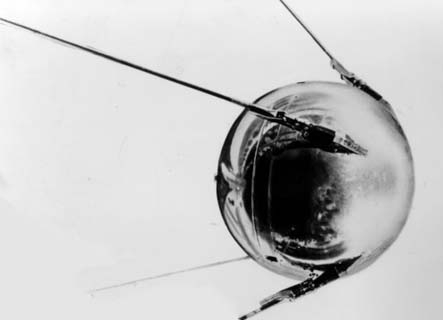
|
| 3 November 1957 |
Sputnik 2 is launched, carrying
the first living earth passenger to space, a dog named Laika. Laika
perished while achieving orbit, becoming the 1st space casualty.
|
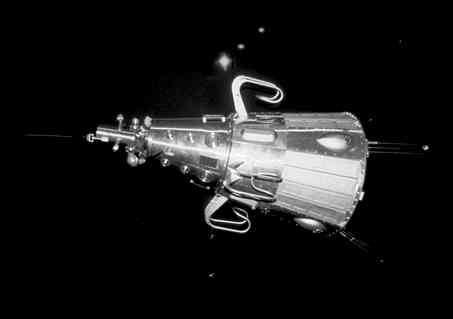
|
| 31 January 1958 |
The first successful U.S. satellite launch puts Explorer 1 into space.
|
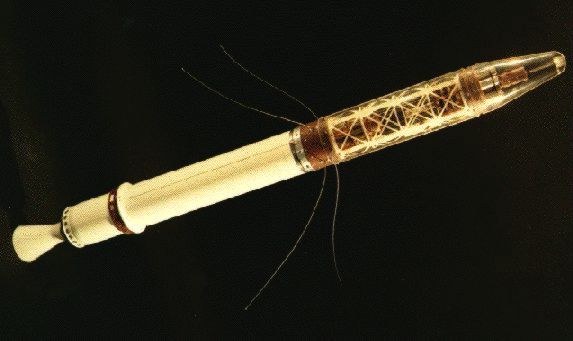
|
| 15 May 1958 |
Sputnik 3 is launched, carrying a large array of instruments for geophysical research.
|
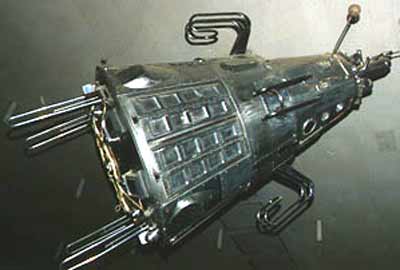
|
| 29 July 1958 |
U.S. President Eisenhower signs National Aeronautics and Space Act, creating NASA.
|
| 18 December 1958 |
U.S. Project SCORE (Signal Communications
Orbit Relay Equipment) is launched on an Atlas rocket. This is the
world's first communications satellite, which broadcasts a taped
Christmas message from President Eisenhower via shortwave back to Earth.
|
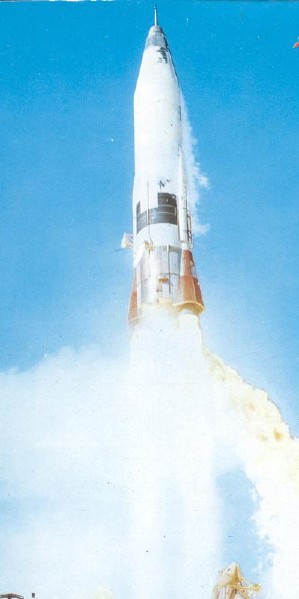
|
| 15 May 1960 |
Sputnik 4 is launched, designed to
investigate the means for manned space flight. It contained scientific
instruments, a television system, and a self-sustaining biological
cabin with a "dummy" of a man. The guidance system malfunctioned, and
the capsule that should have returned to earth went deeper into orbit.
The capsule eventually re-entered the atmosphere 2 years later. There
is evidence that suggests that this flight was actually manned by a
human.
|
| 19 August 1960 |
Sputnik 5 is launched, carrying 40
mice, 2 rats, the dogs Belka and Strelka, and various plants. All
passengers survived the flight, returning to earth the next day.
|
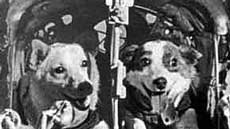
|
| 12 April 1961 |
Soviet Vostok 1 is launched carrying the official first human into space, Yuri A. Gagarin.
|

|
| 5 May 1961 |
U.S. Launches Freedom 7 Capsule atop a Mercury-Redstone rocket putting the first American into space, Alan B. Shepard, Jr.
|

|
| 20 February 1962 |
U.S. Launches Friendship 7 piloted by John Glenn who becomes the first American to orbit the Earth.
|
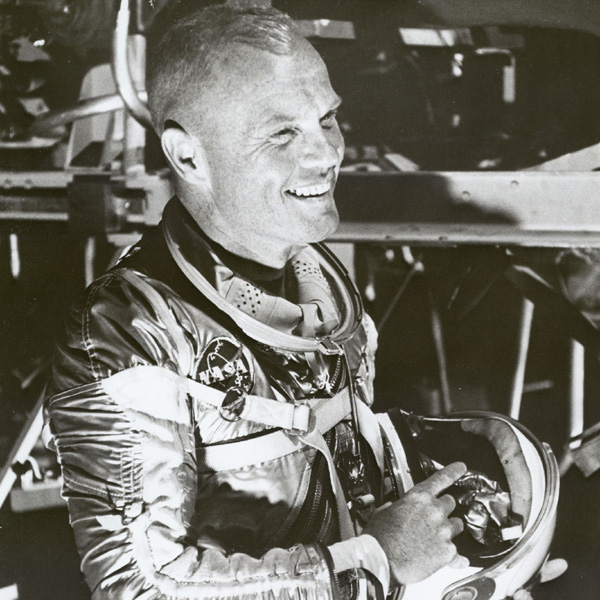
|
| 16 June 1963 |
Soviet Vostok 6 is launched carrying the first woman into space, Valentina Tereshkova.
|
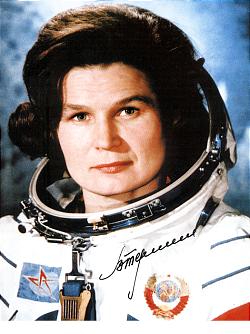
|
| 26 July 1963 |
US launches Syncom-2, the worlds first geosynchronous satellite.
|

|
| 24 April 1990 |
Hubble Space Telescope is launched. While
the telescope is successfully deployed, the primary mirror is seriously
flawed resulting in fuzzy images.
|
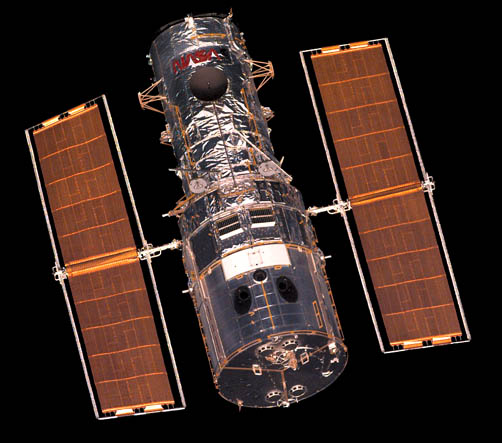
|
| 18 May 1996 |
X Prize competition announced: 10 Million
dollars to the first person or team to safely launch and land a
spacecraft capable of carrying three people to a suborbital altitude or
100km and repeat the trip again within two weeks. This contest is
designed to inspire and jump start civilian and commercial space
programs.
|
| 21 June 2004 |
SpaceShipOne becomes the first privately
funded vehicle to carry a human into space. This U.S. licensed ship is
piloted by American Mike Melvill.
|
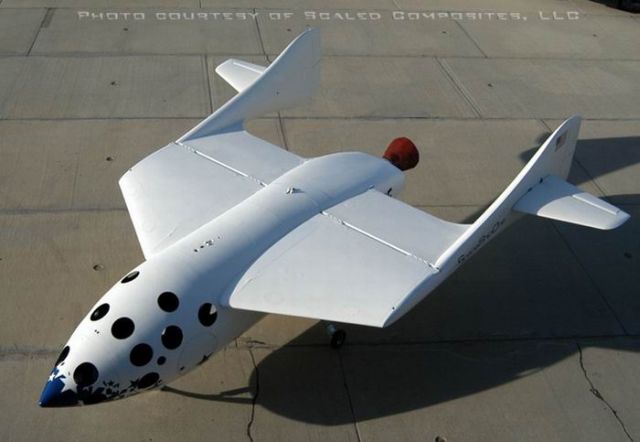
|















